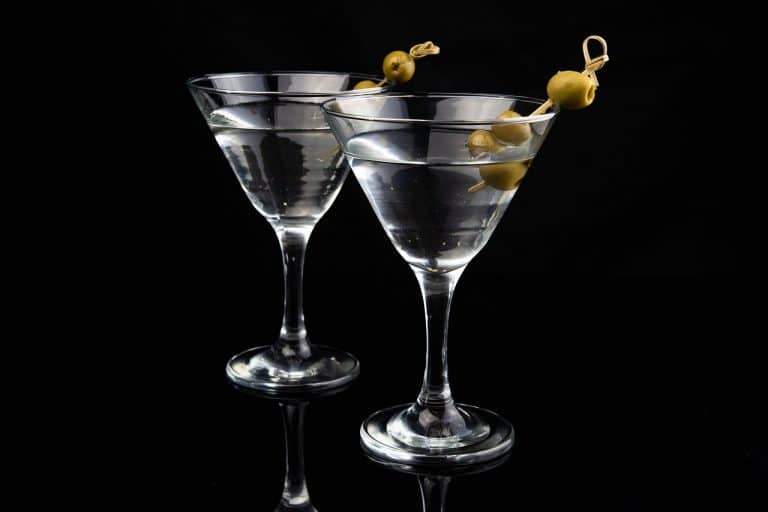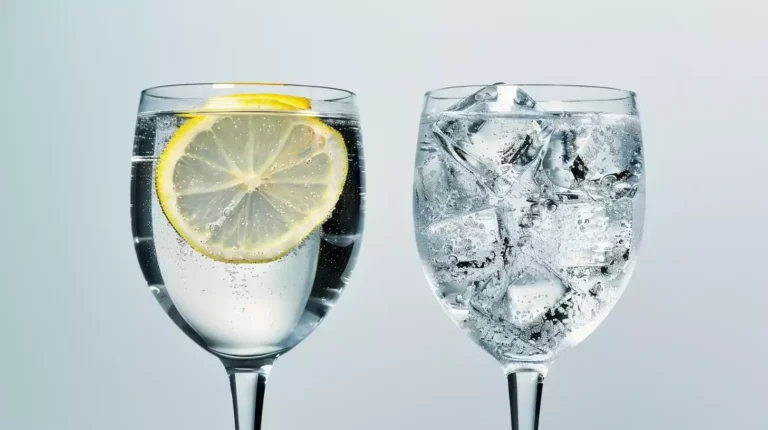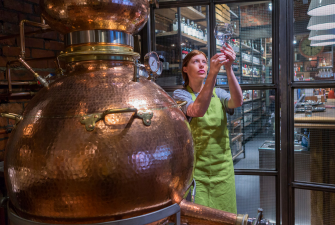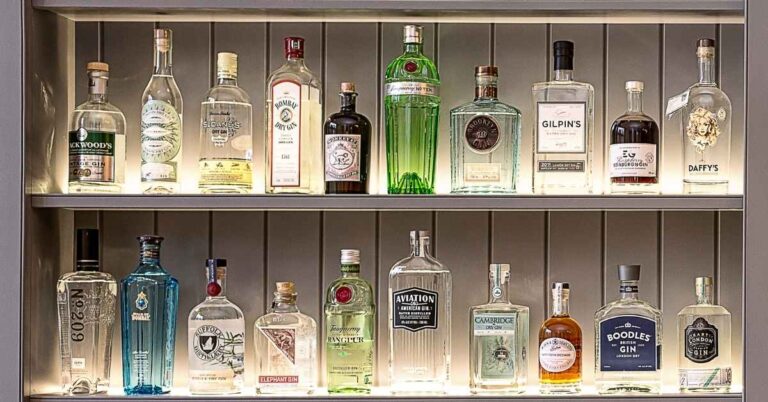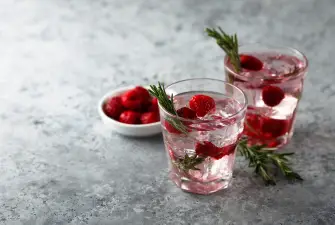Is Gin Just Flavored Vodka? Difference Between Gin and Vodka
Both gin and vodka are among the most popular alcoholic drinks around today – they fly off the shelves in bars and supermarkets. Although they are very different drinks, there are enough similarities that make people wonder if gin is just flavored vodka.
Gin is not just flavored vodka. Vodka is a neutral tasteless spirit whereas gin is infused with juniper and other botanicals. Although they are similar, they have different production methods, are branded differently, and have completely different tastes.
That being said, there is a whole load of similarities between the two that we cannot ignore. It’s entirely feasible to argue that they are one and the same, which is why the subject is hotly debated.
Let’s first understand what gin and vodka are, how they’re made, and look at flavoring alcohols.
What Are The Key Differences Between Gin And Vodka
Before we delve deep into production methods, ingredients, and other quirky facts about both gin and vodka, let’s compare the two. We never pick up a bottle of vodka and add it to tonic to make a G+T. Similarly, we wouldn’t add gin to a cosmopolitan.
So why do people insist that gin is just flavored vodka?
Vodka is a neutral grain spirit, whereas gin is a neutral grain spirit infused with botanicals. Gin has to be primarily infused with juniper berries. This is per law, otherwise, it can’t be called gin.
Vodka, on the other hand, does not need to be infused with juniper berries, or with anything for that matter. There are also differences in taste and serving as well.
Let’s take a look at these similarities and differences in a bit more detail:
Similarities:
- Vodka and gin are both neutral spirits.
- They can both be made from the same base ingredients.
- They both have the same minimum alcohol content.
- They can both be flavored by pretty much anything and the flavoring process is the same for both drinks.
- Gin made at home uses a neutral base spirit infused with juniper berries; this base spirit can be vodka.
We can see there are plenty of similarities between the two… they almost look like the same drink! But, before you become convinced, take a look at the differences.
Differences:
- There is only one type of vodka whereas there are many different types of gin.
- Vodka is usually produced in the same way whereas gin has a few different production methods.
- They are defined differently.
- Vodka can be made with almost anything, which will affect the subtle flavor of the spirit.
- They are marketed in different ways.
- They have different origins.
- They are drunk in different ways.
So now we know what to look out for, let’s dive straight into exactly what these alcohols are so we can get to the bottom of why people think gin is just flavored vodka.
What Is Vodka?
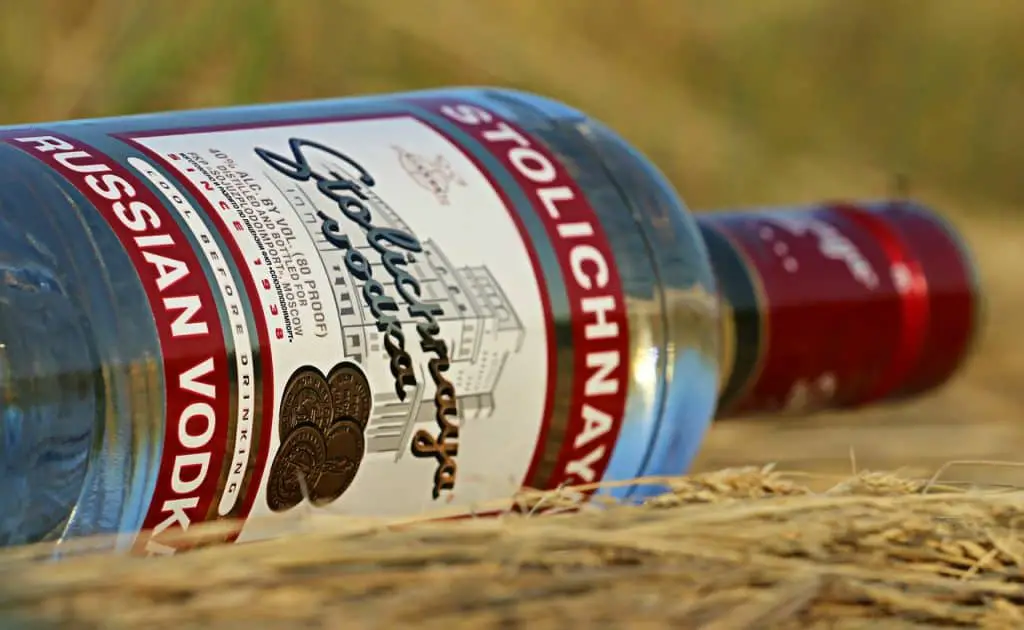
We all love a vodka-based cocktail to liven up our evening but drinking it neat is generally left to the professionals! It’s very much an acquired taste; people generally love it or hate it as it doesn’t have a huge amount of flavor. It’s a perfect base for many other drinks.
Vodka is defined as an odorless, tasteless, neutral spirit. It has minimum alcohol by volume (ABV) content of 37.5% apart from in America, where it has to be 40%.
There are many reasons why vodka is a popular choice – tastelessness is an asset when making cocktails as it won’t overpower any other flavor within the drink. Although we have the legal minimum alcohol content, many vodkas will hover around 40% – 55% ABV making them nice and potent.
How Is Vodka Made?
Vodka can be distilled from almost anything but potatoes, molasses, and grains are most commonly used. The local vodka will be distilled from whichever ingredient that country or region grows most successfully.
For example, in Poland, rye is most commonly used whereas Russia (and most other countries) use wheat.
The base ingredient is then fermented; it’s heated and yeast is added along with water – In Russia, they only use the purest water for use in vodka to make it as pure and tasteless as possible. It’s then distilled (sometimes more than once) and filtered.
It’s interesting to note that the exact origins of vodka are hotly debated between Russia and Poland, both claiming it originated in their country. It’s not known for sure but it’s definitely from one or the other!
No artificial sugars or additives are used so as not to overpower the lack of natural flavor that vodka is meant to have. There are actual rules and laws in place to enforce this.
Does The Taste Of Vodka Depend On The Ingredients Used?
Although vodka by definition is tasteless, there are always very subtle nuances and variations of flavor that come from the base ingredient used. Next time you have some, see if you can detect any… what a great excuse to drink more vodka! Here are a few examples:
- Potato: Fuller flavor and hints of vegetal notes
- Corn: Buttery with a light corn taste (unsurprisingly)
- Wheat: Pepper, aniseed, and lemon
- Rye: Nutty
- Barley: Slightly nutty and slightly sweet
- Grape: Slight lemon flavor
What Is Gin?
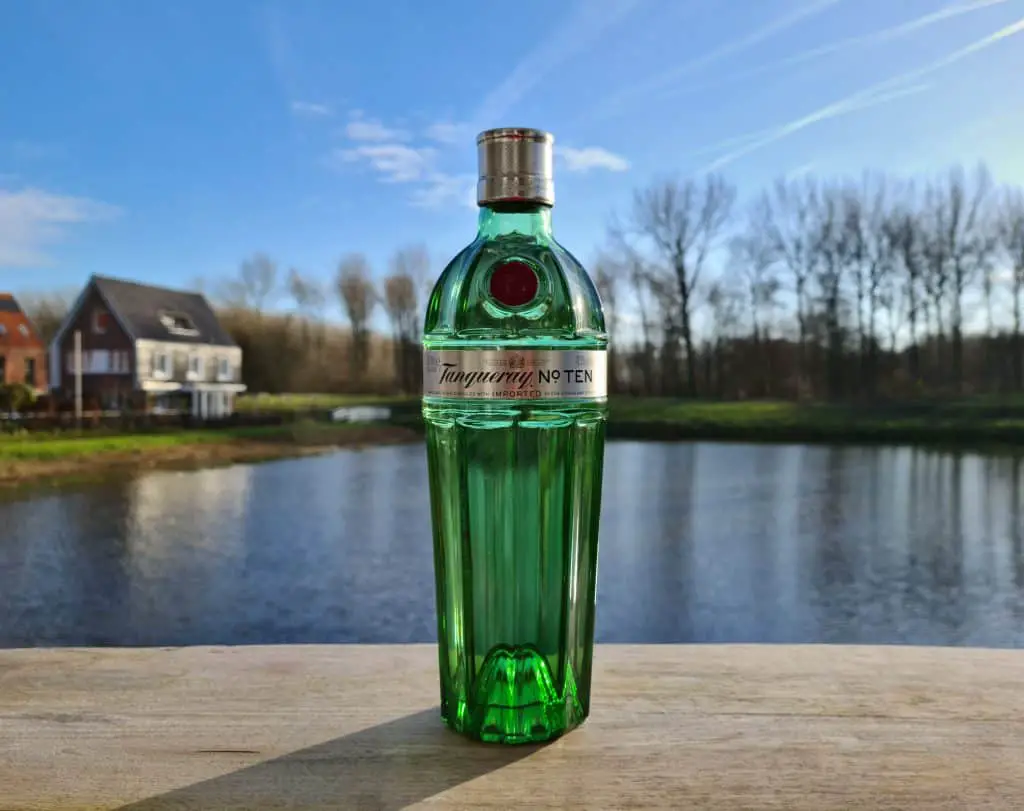
Gin is another of the world’s most popular drinks, especially at the moment. Quirky flavored gins have become a trend with pictures of gorgeously colorful bottles and decorated glasses making the rounds on Instagram.
It’s another great choice for cocktails, with tonic and it’s more drinkable neat due to the extra flavor.
Gin is a neutral spirit and has to be made with juniper to be classed as gin. It has a minimum alcohol content of 37.5% ABV in Europe and a minimum of 40% ABV in America.
Gin gets its flavor from the different botanicals that are infused with the gin. Per law, gin must contain juniper as the predominant taste, but any other botanical can be added.
There are three types of gin: London Dry, Plymouth, and Old Tom gin. They all have varying flavors, production methods, and ingredients but are all worth a try if you have not sampled a great variety of gins.
How Is Gin Made?
Gin is generally distilled from wheat, barley, potatoes, or grapes; juniper is added along with a variety of other botanicals to add depth of flavor. These will vary from brand to brand but generally include spices, herbs, plants, and sometimes fruits.
In terms of production, there are 2 ways in which most gin is made:
The Infusion Method
I made that title up… but it sums this method up perfectly! This is a common method for smaller, expensive, niche brands that sell natural, authentic flavors and it’s also the best way to make gin from home.
You take neutral ethanol as a base; add juniper and any botanicals you like and leave them to steep for up to 48 hours. Water is added later to dilute the alcohol.
You may have already noticed the ‘neutral ethanol base’… if you’re wondering if vodka can be used – it can. This is why people assume gin is just flavored vodka; if you make gin from home, vodka is the easiest neutral spirit to get your hands on.
However, most companies tend to make their own base alcohol, which helps to keep the drinks separate.
The Vapor Method
This method is completely different from infusion as the base spirit never actually touches the botanicals. The chosen ingredients are placed in baskets above the base spirit, which evaporates and infuses.
The infused vapor becomes a liquid again once it’s cooled, which is then ready for bottling. This method still uses the ethanol base we discussed before but as this is rarely done at home, vodka isn’t used by gin companies.
After reading about the methods of making gin, you may be pondering if gin really is flavored vodka… Something to bear in mind – we use a ‘base spirit’, not vodka – it just so happens they are one and the same thing but vodka is not manufactured to be used as a base for gins.
Vodka is produced and bottled for consumer use, not for use by other companies to make other alcoholic beverages.
Flavored Gins And Vodkas
So, we know what gin and vodka both are, how they’re made and the ingredients used. But what about flavored vodkas and gins? Traditionally, vodka is made and drunk unflavoured but as flavored alcohol is a trend that is taking over, it’s no surprise that vodka has joined the fray!
Before we get into the nitty-gritty about flavored gins and vodkas (and if they’re the same thing), there’s just one important thing to need to know:
The words ‘ flavored’ and ‘infused’ are interchanged constantly because we refer to flavored alcohol as any drink that has a different taste, such as raspberry vodka.
However, flavored alcohol also refers to how companies add in this extra flavor – infused and flavored are the 2 ways brands do this (confusing, right?!).
What Is The Difference Between Infused And Flavored Drinks?
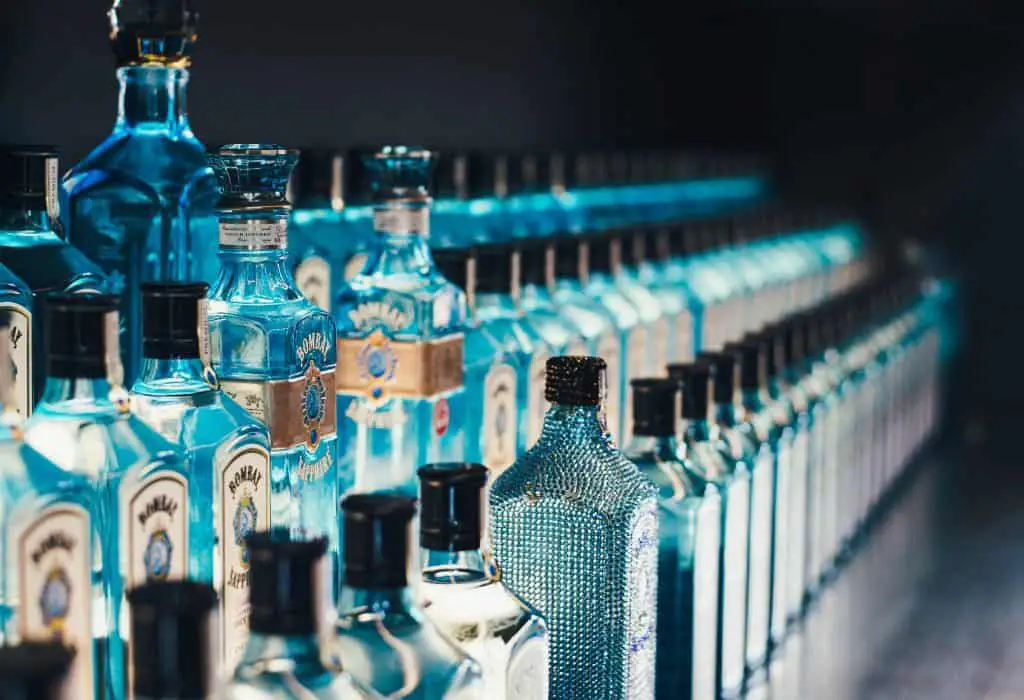
As we mentioned before, ‘infused’ and ‘flavored’ are words that are thrown around and it can get a bit confusing when you want to know how your drink was made. So, here is an explanation of both ways to make flavored gins and vodkas:
Flavored
Let’s start with the most complicated one… when we flavor a flavored drink with flavorings, (see why this is confusing!) we tend to use extracts. Much like vanilla extract is used in cakes, an extract of the flavor of choice is added to the alcohol.
The great thing about this method is it’s instant so it’s easy for big brands to make huge amounts of it quickly. The downside is, the extracts tend to be artificial; you’ll seldom find actual fruit juices and zest in there, which can make them overly sweet.
This can make the drink feel a little synthetic and sweet but for many, this is exactly how they like it!
Infused
We know that infusing juniper berries with a base spirit is one of the ways we can make gin and we can use the same method to make flavored drinks. We pick our ingredient, add it to a container, add standard gin and leave it to steep; then sieve it and bottle it.
This is best used to flavor at home because it’s simple but time-consuming meaning big companies won’t do it as often – plus it would be miles more expensive to buy the real fruits or ingredients used to infuse the alcohol.
The great thing about this method is it’s natural and has a much more authentic taste.
According to a local bartender we spoke to, confirmed that most companies use flavorings as it’s quicker and cheaper. Rachel also confirmed that infusions are generally better tasting, especially when drinking them neat.
Her personal favorite is sugar snap pea gin, according to her it’s “a great summer drink like a fresh garden in your glass and makes sure you garnish with mint and lime.” So, there’s a new one to try!
Final Thoughts
There are decent arguments for both sides; however, gin and flavored vodka are ultimately different drinks. They are branded differently, drunk, and served in different ways and even vodka infused with juniper will have a different taste than gin itself.
Infusing vodka with juniper berries is only really done from home as it’s the easiest way to make a gin but this is not done on a large scale. Vodka being a neutral spirit can be used in many ways; it just so happens that it can be used as the base for gin!
Therefore, I think it’s safe to say gin is not simply flavored vodka.

